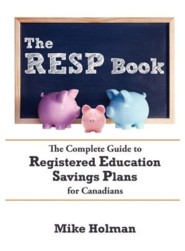This post is part of the Big RESP Series. See the entire series here.
I decided to do a detailed series on the RESP program available to Canadians (my apologies to our non-Canadian readers). This topic has been covered by other blogs and myself in various posts but it’s really a topic for several posts. The tricky part of planning this series was to make it long enough to contain most, if not all of the information an investor may want to know about RESPs but not so long that no one would read it because it would contain too much useless information. My plan is to post this series once a week. This first post briefly explains what an RESP is and the various topics I’ll be covering in the series.
These rules are valid as of 2008.
What is an RESP and how does it work?
Registered Education Savings Plan accounts are government sponsored accounts that you can set up at most brokerages, banks or through a financial advisor. You can contribute money into the account and you will get a 20% grant from the government up to a certain amount. There are no taxes payable on investment income during the life of the account so any interest, capital gains or dividends will not be taxed. When the money is withdrawn to be used by a student then it is taxed in the hands of the student, however the original contributions are not taxed upon withdrawal. If the child does not go to school then the plan is collapsed and there are extra penalties to be paid on the plan.
I’ll be covering the following topics in this series. They won’t all be separate posts but some of them will be. Feel free to send me a question or topic if I’ve missed anything.
- Contributions and CESG – rules and regulations.
- Other grants – Canada Learning Bonds, Alberta (ACES) plan.
- Withdrawals – how they work.
- Eligible Institutions.
- Plan Collapse – what happens if the student doesn’t go to school?
- How to set up an account.
- Pooled plans.
- Asset allocations and sample portfolio.
- Accounts – individual and family.
- Financial analysis of resp vs. non-registered accounts.
- My suggestion for a better RESP program.
- How to deal with problems with your accounts.
- RESPs – Keeping them in perspective.
See the next post – RESP Contributions.
